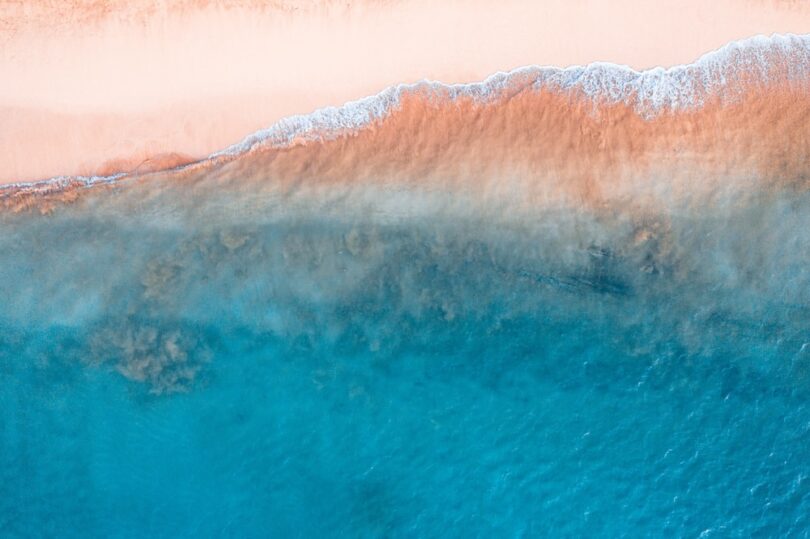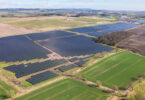Protecting carbon sinks – those areas that absorb vast amounts of greenhouse gases – is as important in the fight against climate change as reducing our emissions, a fact that will be one of the themes at the Ocean Pavilion of COP28 in November 2023. Marine Consultant Becca Hamilton, part of the International Projects Group, a specialist team within the RSK Group, explains how we can protect and restore the aquatic environment in line with the goal of net zero.

Becca Hamilton
Net zero emissions refers to the balance between the amount of greenhouse gas that’s produced and the amount that’s removed from the atmosphere. To date, most action towards net zero targets has focused on cutting emissions. If we are to meet net zero goals in any capacity, we must also protect our carbon sinks, which are vital to the removal of greenhouse gases from the atmosphere. The oceans are one of the largest sinks, absorbing some 31% of greenhouse gas emissions, where photosynthesising plankton use carbon to generate up to half the oxygen in our atmosphere. Coastal marine habitats, such as coral reefs and mangrove forests, are also extremely efficient systems of natural carbon sequestration.
This makes the health of the oceans critical in our fight against climate change. Right now, they are under pressure from acidification, habitat destruction, overfishing and pollution. If we are to reach net zero targets with their help, we must protect, restore and improve the marine environment.
Recent adoption of the ‘30 by 30’ biodiversity goal in the marine environment creates imperative for regenerative policy and investment, but we are still losing huge and important areas of marine life. A 2020 report by the Global Coral Reef Monitoring Network found that between 2008 and 2018, 14% of the world’s coral was killed, and a 2022 report by the International Coral Reef Initiative found that since 1996, 5245 km² of mangroves, an area a quarter of the size of Wales, has been lost. In addition, it is estimated that each year, around 2% of the world’s kelp forest coverage is disappearing.
Bold and innovative restoration projects have been developing how to replant corals and mangroves, but restoring a natural habitat is much more difficult than protecting one that already exists. Despite spending lots of time and funding on research, coral reef restoration in particular has low success rates. There’s a lot that can go wrong when the corals are young, and they often do not make it to an established age. The same factors of ocean warming and acidification that cause mature corals to die off are present when replanting corals. Similar challenges exist for immature mangrove forests, which take decades to reach full maturity. Given the high time and financial costs for little pay-off with restoration, we must instead aim, first and foremost, to protect these important habitats in their natural, mature forms. Nature reserves and zones where development is prohibited for docks, shipping channels or even renewable energy installations are a vital part of this. These can be established within a country’s territorial waters, in most cases, and are relatively straightforward – we just need to be doing more, faster.
Protection applies equally to the open ocean as much as it does to those relatively shallow and more charismatic coastal areas. Phytoplankton, those microscopic organisms that live near the water’s surface, make up the bulk of primary producers of oceanic food webs and, in temperate seas especially, bloom at several key points in the year. These blooms create huge amounts of oxygen while absorbing massive amounts of carbon dioxide.
While there is some variation, usually phytoplankton blooms will be in the same place every year, where all the conditions are optimal at the right time. Because of that, these blooms can be protected by defining an area considered to be the most likely area for the bloom and, because the organisms are particularly sensitive to different pollutants, reducing or stopping vessel traffic through that area, at least during the period of blooming. The reduced marine traffic along with strict restrictions on wastewater dumping in nearby areas would reduce pollution that may be restricting the phytoplankton blooms. Not only do healthier blooms provide the most food for the ecosystem but also they absorb the largest amount of carbon dioxide possible. This could possibly be done effectively using the recently ratified United Nations High Seas Treaty, as many of these blooming areas are located far from the coast, in polar and subpolar seas.
Along with protection of the most sensitive, vulnerable and productive habitats, we must also look to improve, or at least mitigate, our impacts on the environment where we do influence it, even in situations that are touted as bringing a net environmental benefit, such as offshore wind installations.
Part of this will be up to governments to prioritise and incentivise projects that are more responsible. That will mean considering everything that goes into the development, including production processes. Finding ways to be net zero in development, whether that is in the concrete and steel manufacturing, the use of electric and solar-operated shipping or in the end-of-life disposal or recycling, will embed these principles.
We must look at developments as an opportunity to improve the environment that they alter. As just one innovation example, the use of 3D printed concrete that comes pre-loaded with sessile organisms can help encourage the establishment of new oyster beds, creating new habitats in the aquatic environment around the development being built. Similar schemes show promising results, such as the artificial reefs built as part of Ørsted’s wind farm in the Netherlands, where research shows cod using the reefs, a sign of habitat productivity.
In the UK, we have an ongoing consultation about marine net gain, which would require developers to show increased biodiversity through their work in an aquatic equivalent to the biodiversity net gain requirements we have on land; this would make nature-positive outcomes a statutory requirement of project designs. A project environmental impact assessment (EIA) aims to understand the baseline information and the type of habitats present, as well as potential impacts of the project design. It would be natural to embed net gain within the development plans of a project during this EIA process as a really powerful way to encourage the restoration of aquatic environments. While offsetting and ‘no net loss’ policies have been implemented in other nations such as France, Chile and Australia, no nations yet have a legal mandate on net gain for marine developments.
This dual approach of protection and restoration will encourage healthy seas and oceans. Plans to reach net zero emissions targets rely on the oceans acting as a carbon sink, and their ability to store and absorb carbon is directly tied to the health of aquatic ecosystems. The further we degrade our oceans, the harder we make it for ourselves. If we are to reach net zero targets and find a balance with the natural world, we must consider the health of the oceans a priority.
Becca Hamilton is a marine consultant in RSK’s International Projects Group, whose marine consultancy team provides environmental and social impact assessment services across all marine areas, from intertidal zones to open ocean. She has been working in the marine sector for ten years, with a particular focus on marine mammal conservation.







